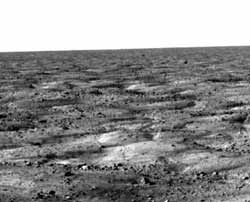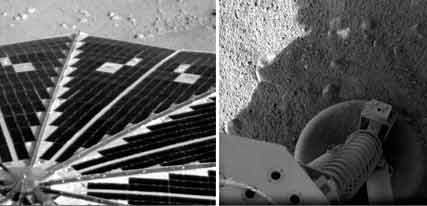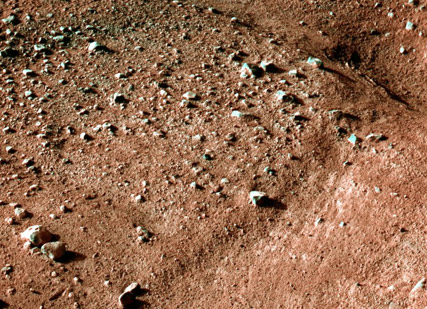NASA's Phoenix Mars Lander makes a successful landing
26 May 2008
American space agency, NASA, has confirmed that it has successfully placed a spacecraft on the Martian surface. The Martian lander, Phoenix, landed on the surface just before 8 pm EDT Sunday, after a nine-month, 422-million-mile voyage.
 The landing took place after a delicate series of manoeuvres slowed the Phoenix Mars Lander from about 13,000 mph to just 5 mph at touchdown seven minutes later. The scientists had described this time frame as being ''seven minutes of terror.''
The landing took place after a delicate series of manoeuvres slowed the Phoenix Mars Lander from about 13,000 mph to just 5 mph at touchdown seven minutes later. The scientists had described this time frame as being ''seven minutes of terror.''
"A signal has been detected from Phoenix indicating that the lander is on the surface of Mars," NASA reported on its Web site just after the 7:53 p.m. EDT touchdown.
As the lander approached the planet's surface, "it gently touched the ground," a NASA project system engineer said. "At about five mph, it just parked [itself]. It's got about a one-degree tilt. It's just parked very neatly and flat. It's just great."
After a few minutes, allowing the dust raised by the descent thrusters to settle, Phoenix deployed its solar panel array so it could begin generating electricity for its experiments and other on-board systems.
After the panels deployed, the lander began sending data back to Earth via three orbiting spacecraft that were relaying the information to project scientists.
The first live photographs from Phoenix began arriving about three hours after touchdown, and these included those of teh craft's solar panels. This allowed NASA officials to confirm whether the panels were properly deployed.
The Phoenix now commences a three-month-long science mission made up of a series of soil analysis projects that involve digging lightly into the Mars surface to study the history of water, ice and life potential in the planet's soil.

The Phoenix lander is a follow-up programme to an unsuccessful Mars Polar Lander project that crashed into the Martian surface eight years ago, in December 1999. The Polar Lander crashed into oblivion after its descent engines shut down early at a high altitude, throwing the craft out of control even as it prepared to land.
 NASA scientist had said then that the mission was severely underfunded and the programme had showed the effects. By contrast, all systems of the Phoenix programme have been tested at least twice.
NASA scientist had said then that the mission was severely underfunded and the programme had showed the effects. By contrast, all systems of the Phoenix programme have been tested at least twice.
Since the 1999 Polar Lander fiasco, NASA has tasted success with two 2004 Mars rover missions, which have been crisscrossing the planet's surface in a series of experiments and exploratory missions.
The rovers, however, landed on Mars in large, cushy "air bags" that bounced onto the surface. These bags subsequently deflated allowing the rovers to drive out and begin their work. By contrast, Lander missions use parachutes and thruster engines to guide the craft into a controlled descent.
The last time NASA successfully landed a spacecraft as a lander on Mars was in 1976, when the Viking I and Viking II landers touched down safely for a series of science and photography missions.







.webp)














